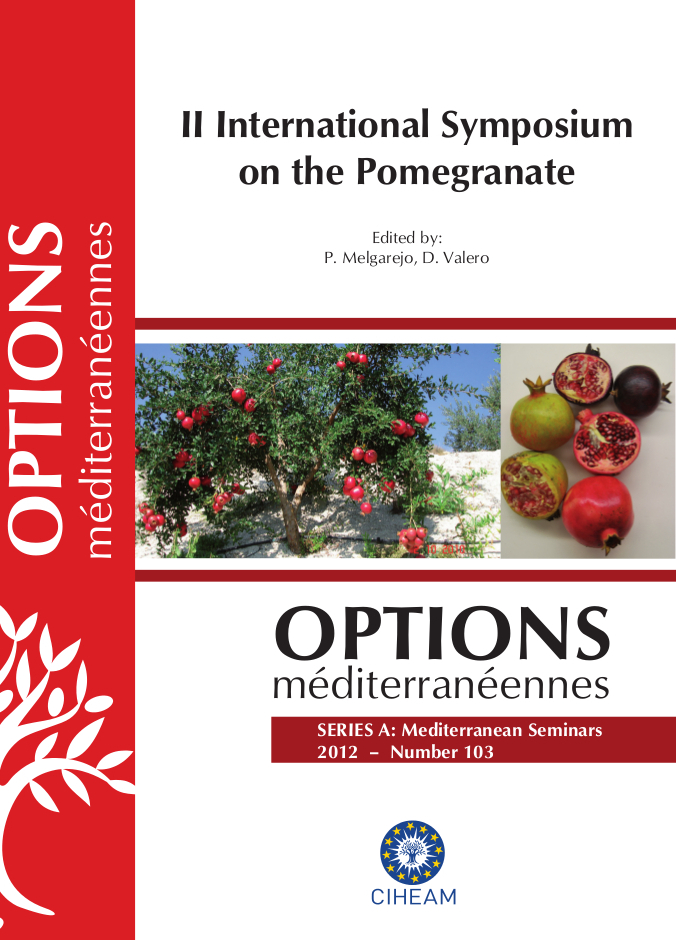| Article précédent | p. 165-168 | Article suivant |
Pomegranate fruit ripening: nutritional and bioactive compounds
Pomegranate fruit undergoes several biochemical changes during growth and ripening on tree leading to the fruit to reach an optimal quality at full ripening stage. These changes are increase in sugar concentration (glucose and fructose), diminution in total acidity (citric and malic acids) and increase in anthocyanin concentration. In addition an increase occurs in antioxidant activity which reaches values higher than those found in other fruits of the Mediterranean diet. However, important differences are found among cultivars in these parameters responsible for organoleptic, nutritive and functional properties of pomegranate fruit and thus, cultivar is an important factor determining fruit quality. In addition, pomegranate is a perishable fruit having limited storage possibilities, due to the occurrence of several alterations due to mechanical damage during harvesting and packaging or during storage, such as dehydration, over-ripening (leading to flavor alterations and decreases of antioxidant properties), decay incidence and chilling injury(CI). CI damage appears when fruits are transferred to 20°C after storage at temperatures lower than 5°C and are manifested as pitting, with purple color, desiccation and skin browning, which can reach the carpelar membranes and arils. Then, proper harvesting, handling and storage conditions should be chosen to preserve pomegranate fruit quality attributes from tree to table.
- [ Afficher ]
- [ Télécharger ]
- [ Exporter la citation ]
Vous pouvez télécharger la citation au format :
- [ Imprimer ]
-
Mots-clés
ACIDE ORGANIQUE, ANTIOXYDANT, COMPOSE PHENOLIQUE, DATE DE RECOLTE, MURISSAGE, QUALITE, SUCRECiter cet article
Serrano M. Pomegranate fruit ripening: nutritional and bioactive compounds. In : Melgarejo P. (ed.), Valero D. (ed.). II International Symposium on the Pomegranate. Zaragoza : CIHEAM / Universidad Miguel Hernández, 2012. p. 165-168. (Options Méditerranéennes : Série A. Séminaires Méditerranéens; n. 103). 2. International Symposium on the Pomegranate, 2011/10/19-21, Madrid (Spain). http://om.ciheam.org/om/pdf/a103/00006928.pdf



